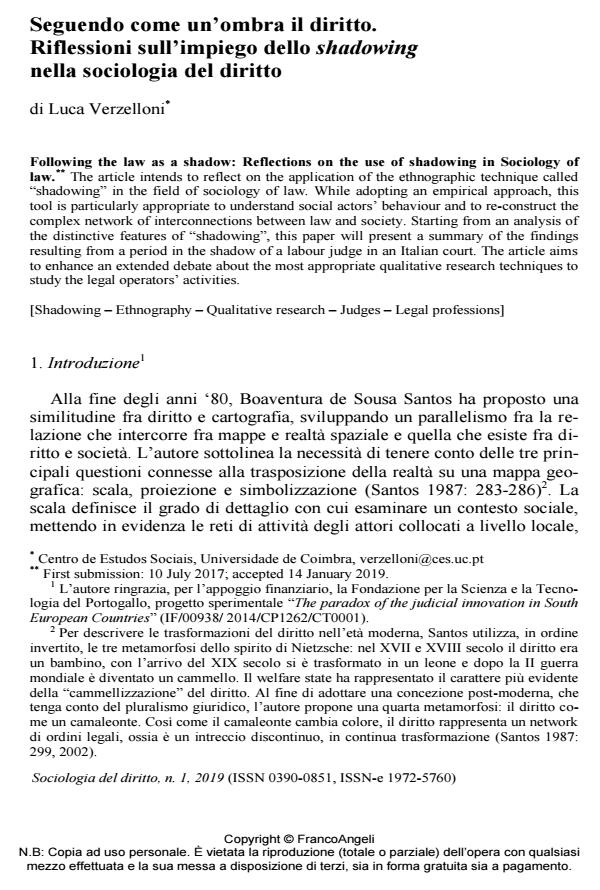Seguendo come un’ombra il diritto. Riflessioni sull’impiego dello shadowing nella sociologia del diritto
Titolo Rivista SOCIOLOGIA DEL DIRITTO
Autori/Curatori Luca Verzelloni
Anno di pubblicazione 2019 Fascicolo 2019/1
Lingua Italiano Numero pagine 29 P. 23-51 Dimensione file 376 KB
DOI 10.3280/SD2019-001002
Il DOI è il codice a barre della proprietà intellettuale: per saperne di più
clicca qui
Qui sotto puoi vedere in anteprima la prima pagina di questo articolo.
Se questo articolo ti interessa, lo puoi acquistare (e scaricare in formato pdf) seguendo le facili indicazioni per acquistare il download credit. Acquista Download Credits per scaricare questo Articolo in formato PDF

FrancoAngeli è membro della Publishers International Linking Association, Inc (PILA)associazione indipendente e non profit per facilitare (attraverso i servizi tecnologici implementati da CrossRef.org) l’accesso degli studiosi ai contenuti digitali nelle pubblicazioni professionali e scientifiche
The article intends to reflect on the application of the ethnographic technique called "shadowing" in the field of sociology of law. While adopting an empirical approach, this tool is particularly appropriate to understand social actors’ behaviour and to re-construct the complex network of interconnections between law and society. Starting from an analysis of the distinctive features of "shadowing", this paper will present a summary of the findings resulting from a period in the shadow of a labour judge in an Italian court. The article aims to enhance an extended debate about the most appropriate qualitative research techniques to study the legal operators’ activities.
Parole chiave:[Shadowing - Ethnography - Qualitative research - Judges - Legal professions]
Luca Verzelloni, Seguendo come un’ombra il diritto. Riflessioni sull’impiego dello shadowing nella sociologia del diritto in "SOCIOLOGIA DEL DIRITTO " 1/2019, pp 23-51, DOI: 10.3280/SD2019-001002